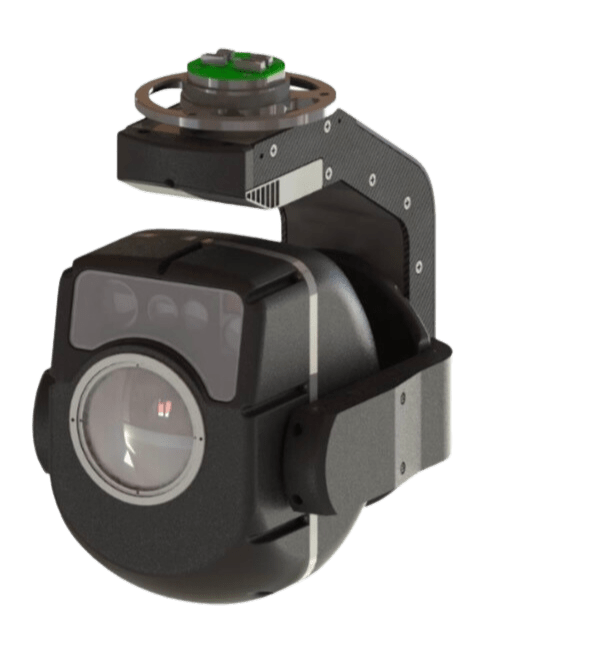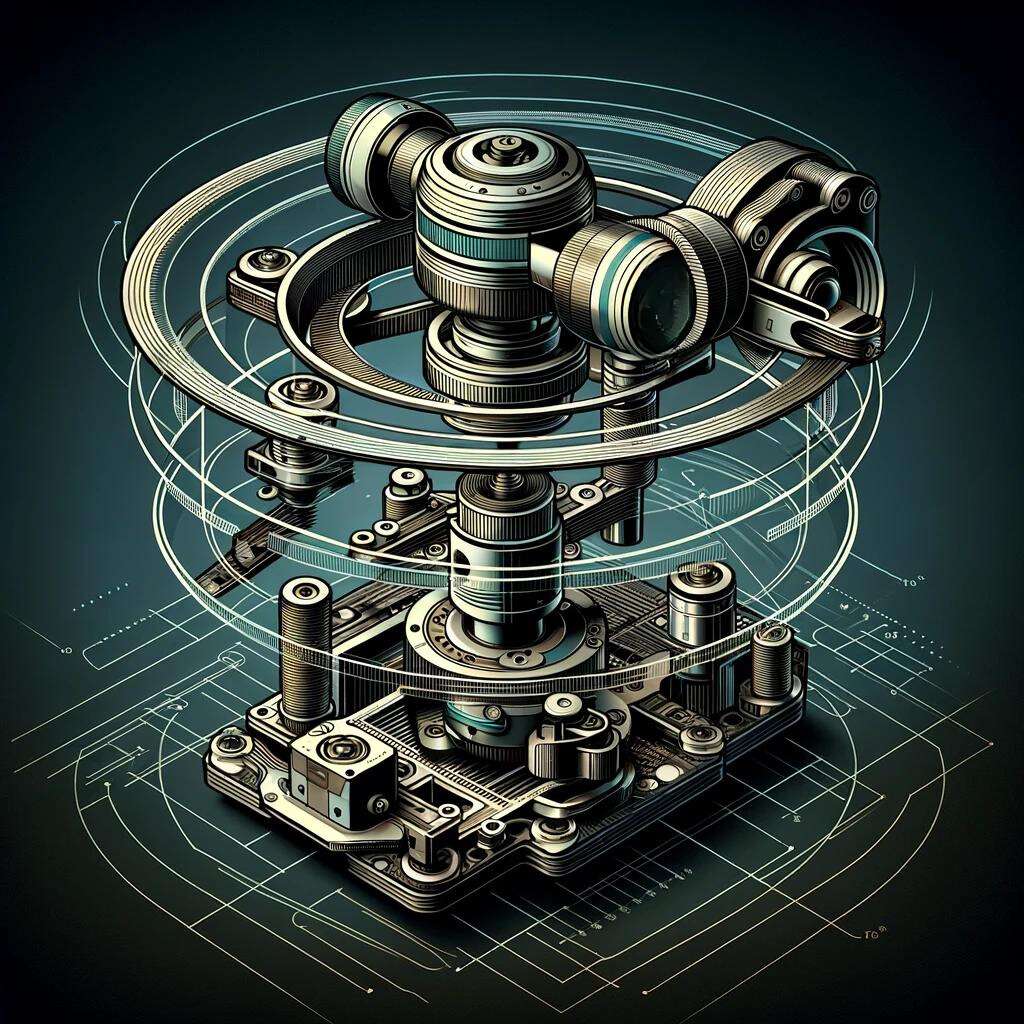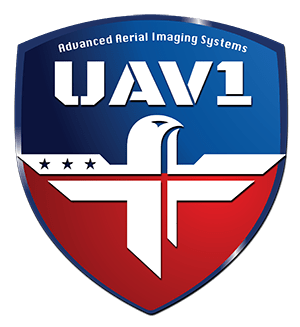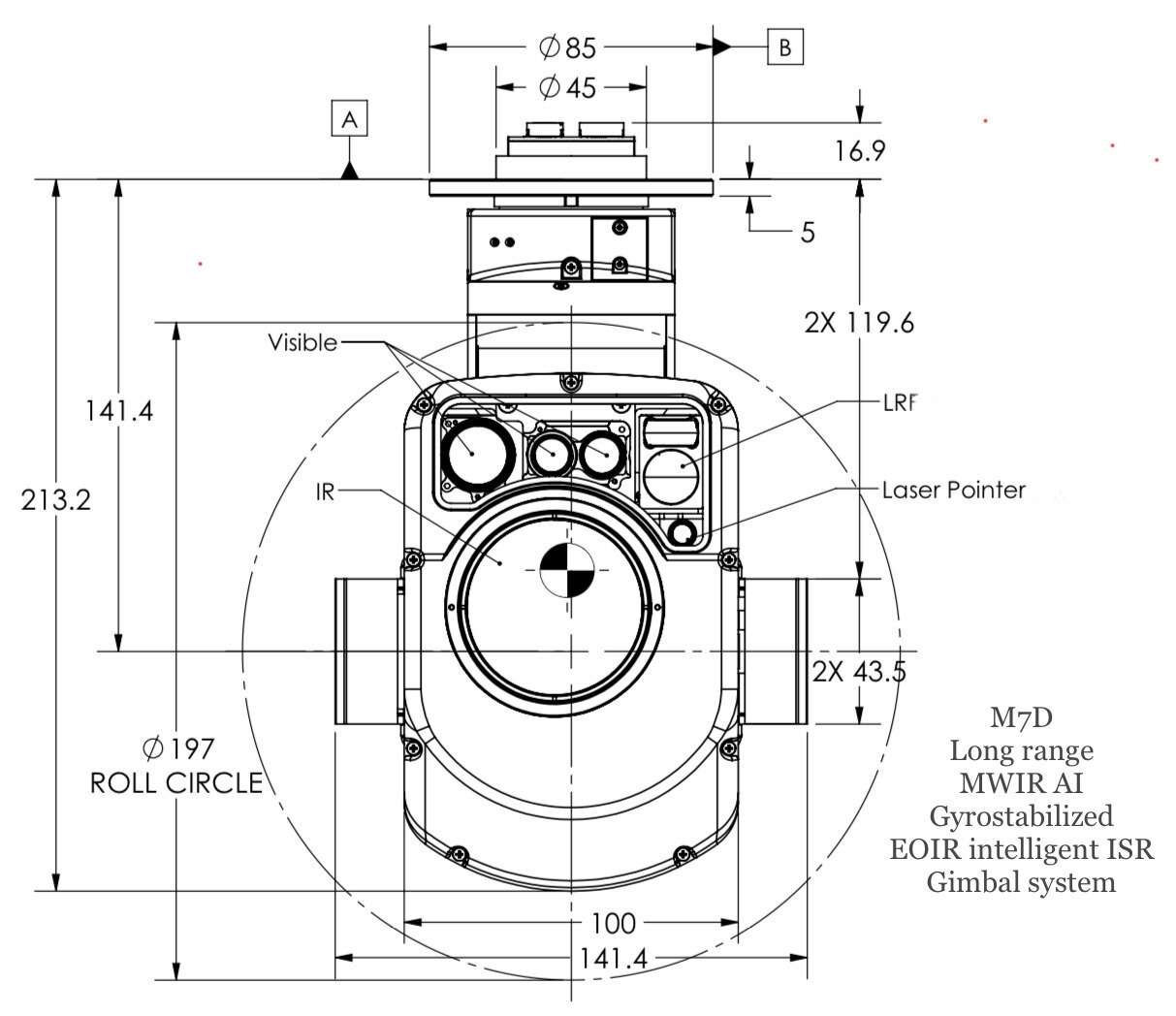
M7D Long Range Cooled MWIR EO IR Zoom HD Stabilized Gimbal with laser and LRF rangefinder
Introducing the M7D, our latest innovation in thermal imaging technology. This ultralight, long-range cooled MWIR (Mid-Wave Infrared) thermal imaging gimbal system is a groundbreaking addition to our range of advanced surveillance solutions. Weighing only 1790 grams, the M7D boasts a powerful 82X HD EO (Electro-Optical) camera, laser rangefinder, and laser pointers, encapsulating the best in modern EO-IR imaging technology.
Key Specifications and Features
Tactical Precision:
The M7D Cooled MWIR Midwave Thermal Gimbal – Empowering Military Operations with Target Tracking and Enhanced Image Capabilities

Additionally, the M7D offers exceptional image enhancement and processing capabilities. Its advanced onboard image processing can significantly improve the quality of captured thermal imagery, even in challenging conditions like poor light, fog, or smoke. It can apply a range of algorithms to sharpen the image, improve contrast, and highlight areas of interest. Furthermore, this image enhancement can work in conjunction with its target tracking – the system can highlight and follow a target, making it easier for the operator to maintain visual contact.
One of the standout features of the M7D is its high-definition video tracking and target tracking capabilities. In a dynamic operational environment, where targets can move quickly and unpredictably, the ability to maintain a continuous, stabilized visual lock is invaluable. The M7D’s advanced tracking algorithms can automatically detect, lock on, and follow targets of interest in real-time. This is crucial for intelligence gathering, precision strikes, or even tracking wildlife in conservation efforts.

Technical Overview of Cryogenically Cooled MWIR EO/IR Systems

Cryogenically cooled MWIR EO/IR systems represent the pinnacle of thermal imaging technology, providing enhanced detection capabilities in unmanned systems. By cooling the sensor elements to cryogenic temperatures, these systems significantly reduce thermal noise, resulting in crisper images with higher resolution. The M7D systems operate in the midwave infrared spectrum, between 3-5 micrometers, optimal for detecting thermal signatures in a variety of conditions. These systems integrate long-range zoom capabilities and high-definition video tracking, making them ideal for advanced surveillance and reconnaissance tasks.
Versatility of Multi-Sensor Gimbal Payload Systems
The multi-sensor gimbal payload systems are a testament to the adaptability required in modern surveillance operations. These systems allow for the integration of various sensors and cameras, such as LWIR, MWIR, SWIR, and visible light cameras, each catering to specific mission requirements. They offer flexibility in payload configuration, which means that users can tailor the sensor array to the specific needs of the mission, whether it’s for day or night surveillance, target tracking, or image enhancement. The ability to deploy these gimbals across various platforms, from UAVs to USVs and UGVs, underscores their versatile design.


Operational Scope of EO IR Sensors for Unmanned Aerial Vehicles
EO IR sensors for UAVs are engineered to cover a broad spectrum of operational environments. Whether it’s a VTOL multirotor, a fixed-wing aircraft, or a tethered balloon, these sensors provide critical vision capabilities. The operational scope includes long-range detection and tracking of both ground and aerial targets, functioning across diverse climatic conditions. From coastal surveillance to border patrol, these sensors enhance the operational effectiveness of UAVs, providing operators with real-time intelligence to make informed decisions.
Stabilization Capabilities of Cooled MWIR Thermal Gimbals
Stabilization is a critical feature of cooled MWIR thermal gimbals, as it directly affects image quality and tracking accuracy. These gimbals come with 2, 3, or 4-axis gyro-stabilization options to counteract the movements of the UAV, ensuring that the imaging system can maintain a steady focus on a target or area of interest. The advanced stabilization allows for precise movements and adjustments, which is especially important when operating at long ranges or in challenging conditions. The result is clear, stable imagery that can be relied upon for critical mission objectives.







